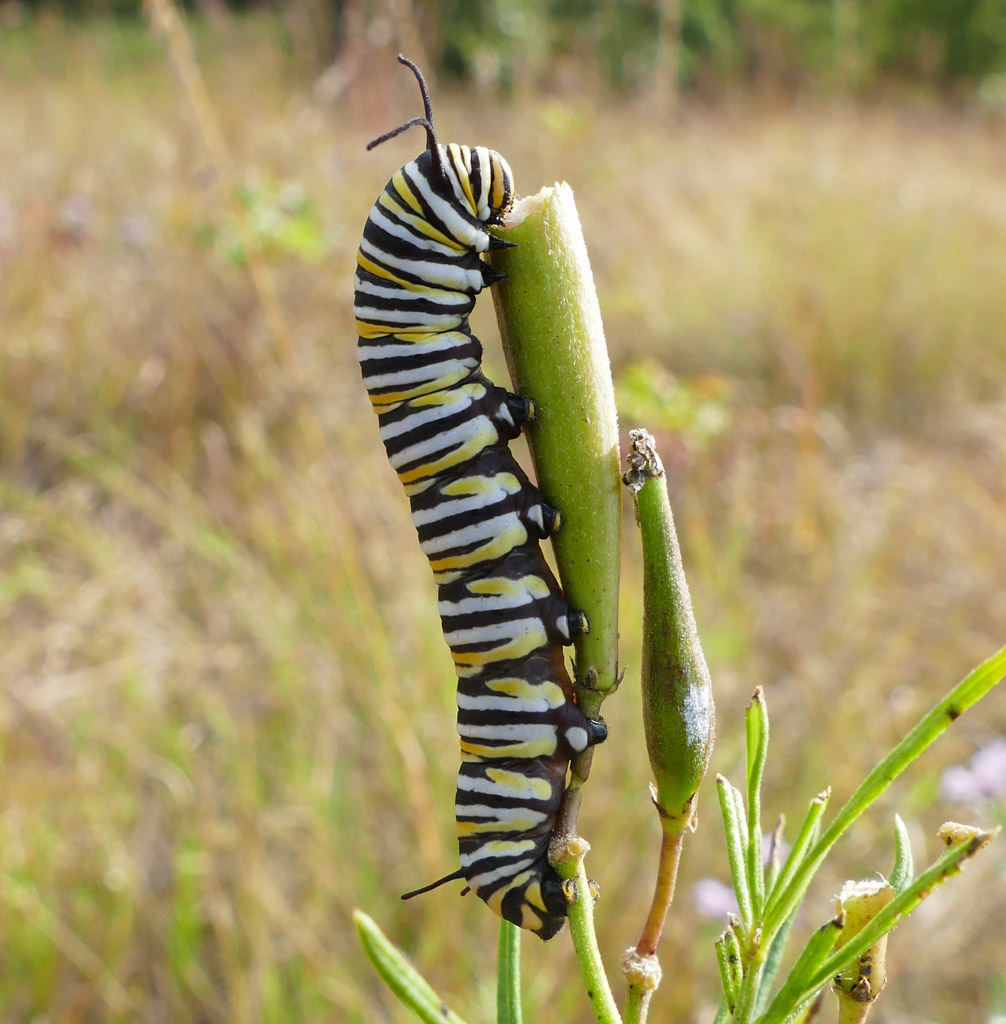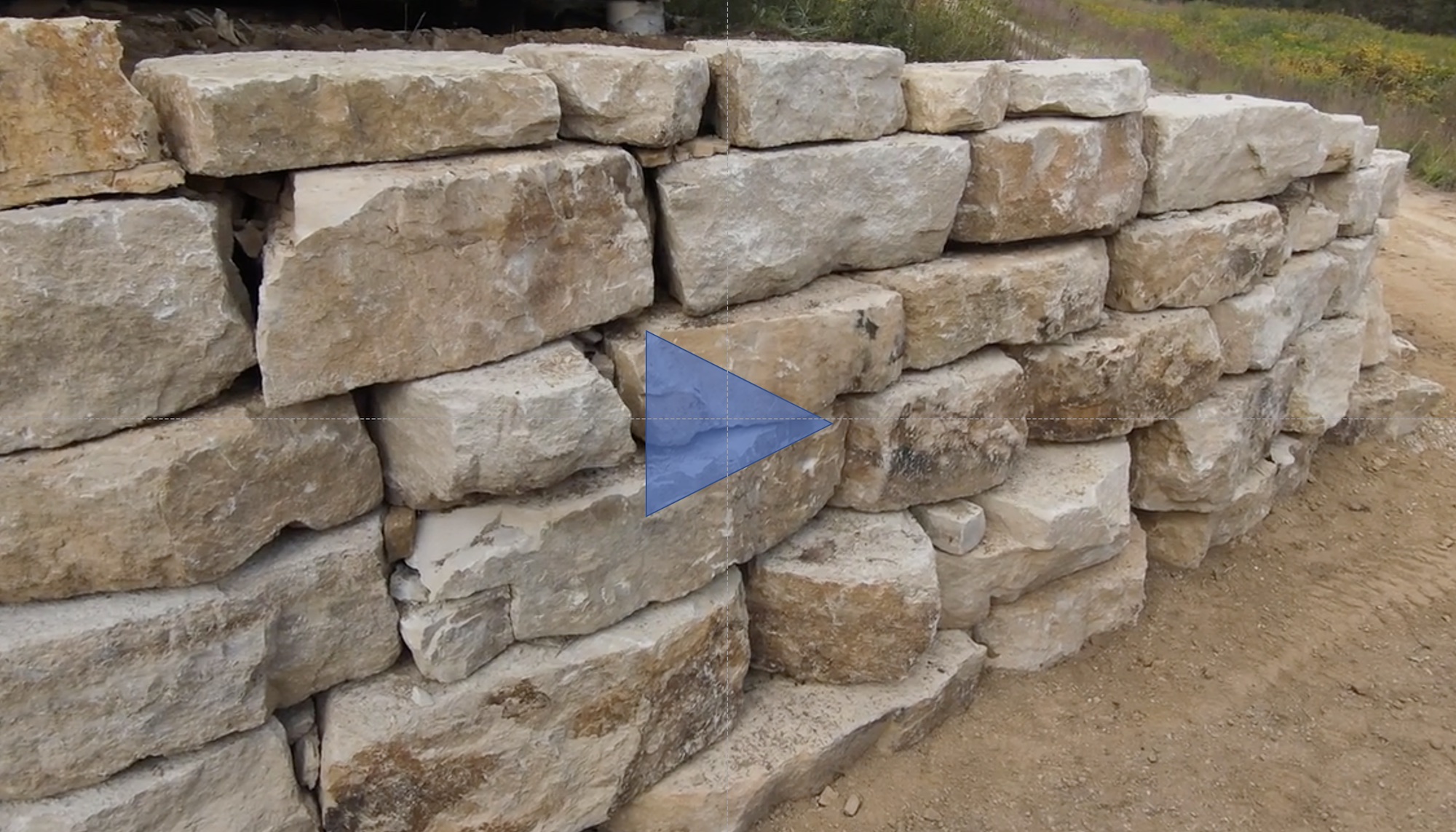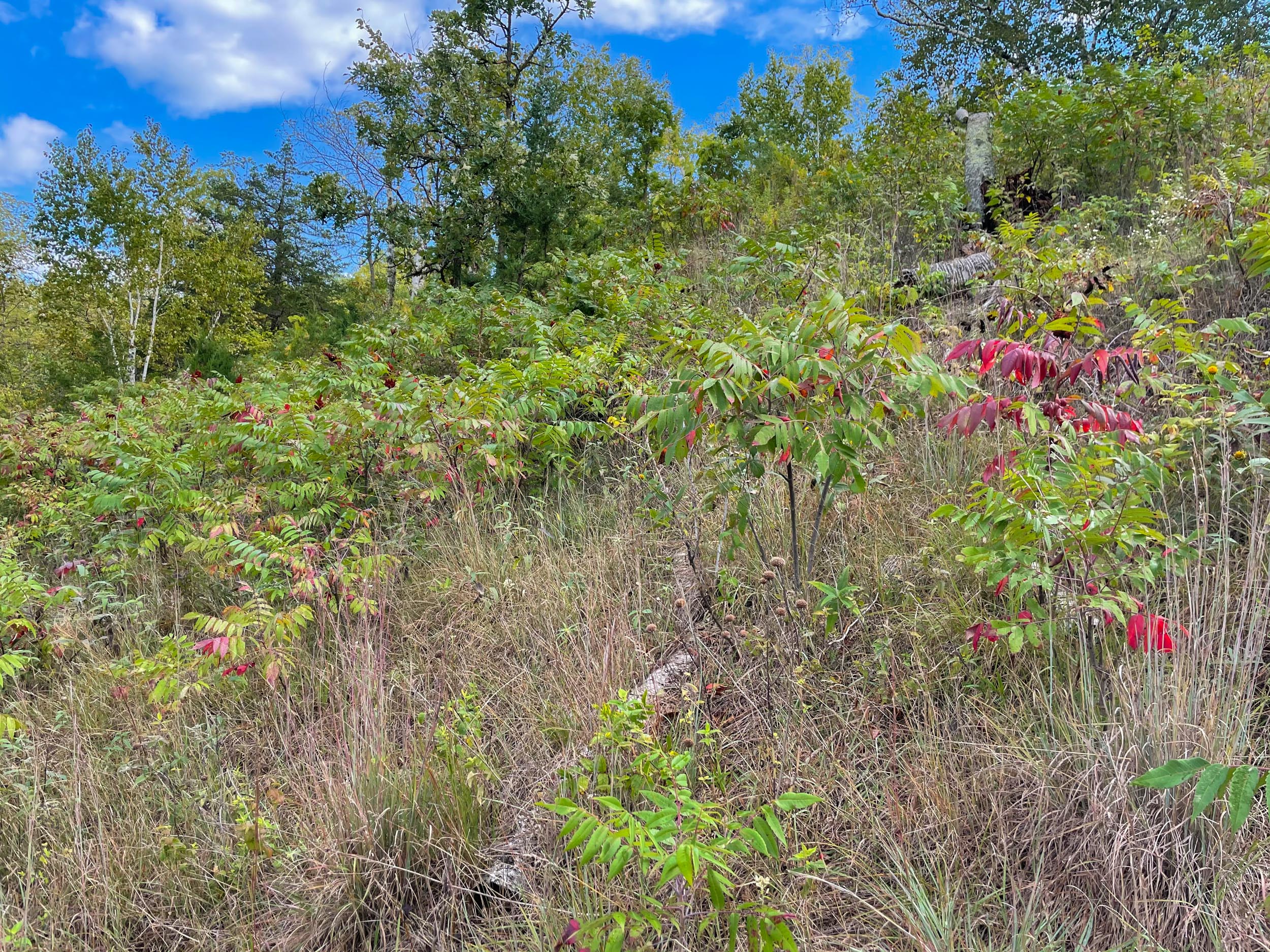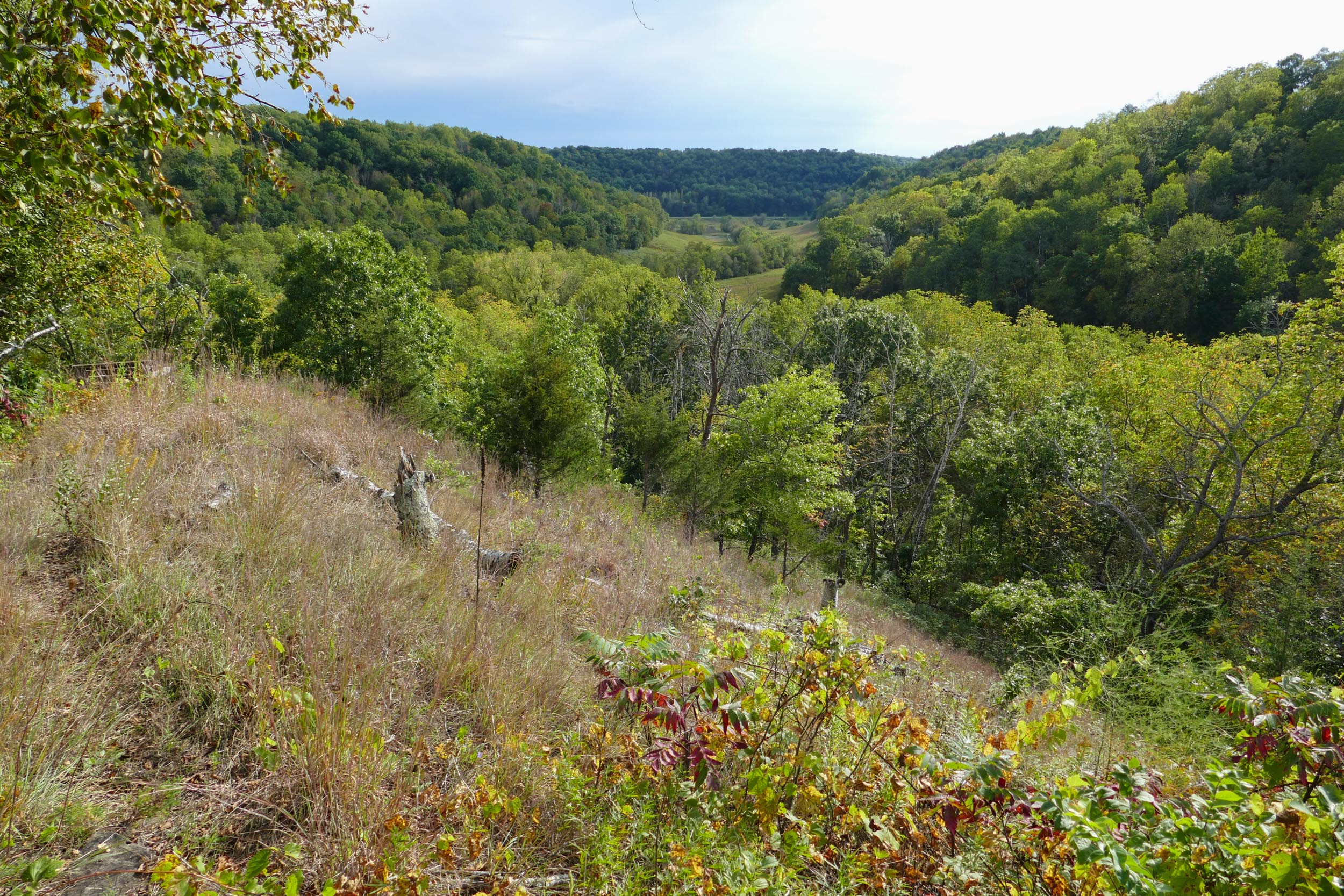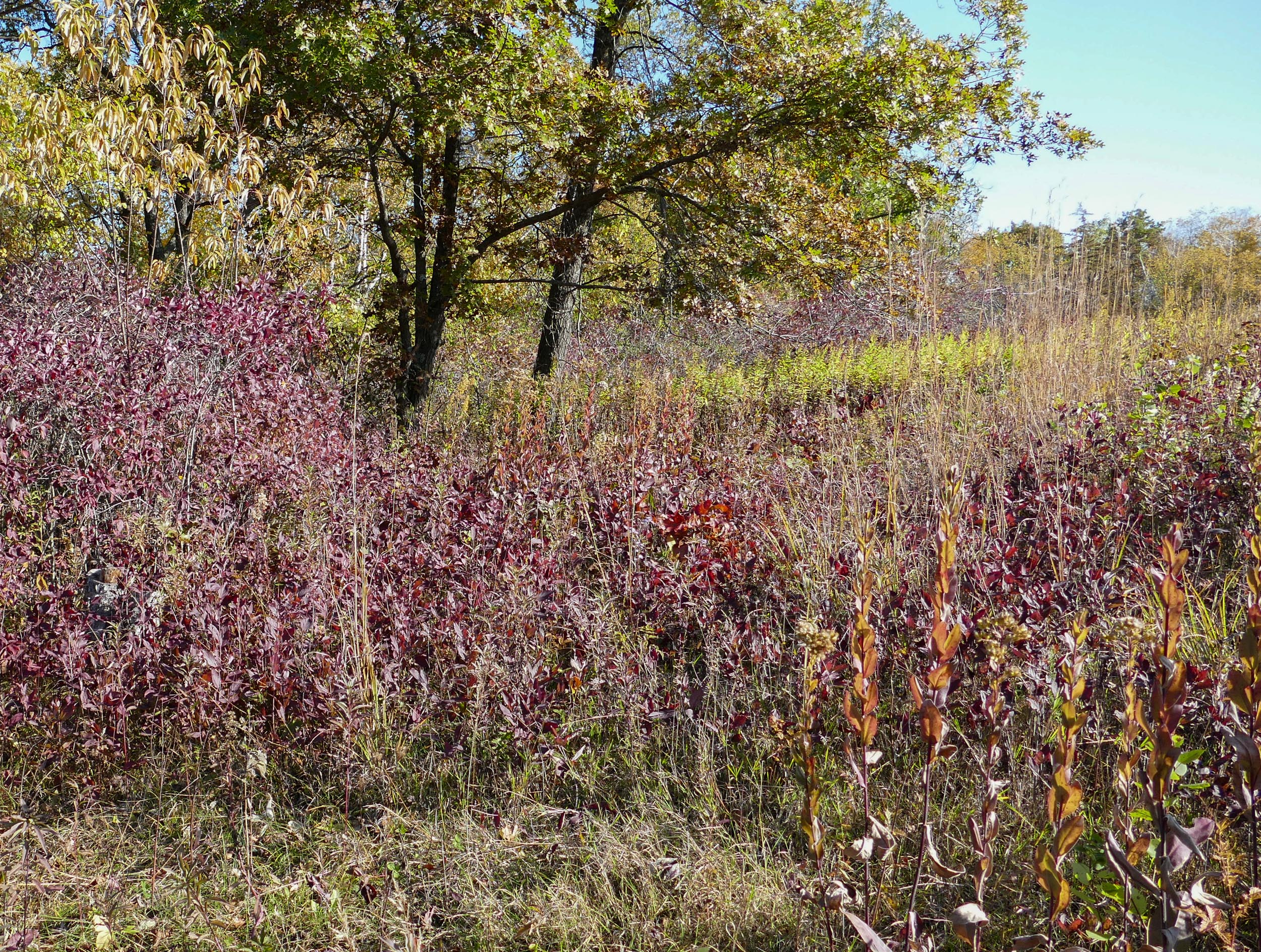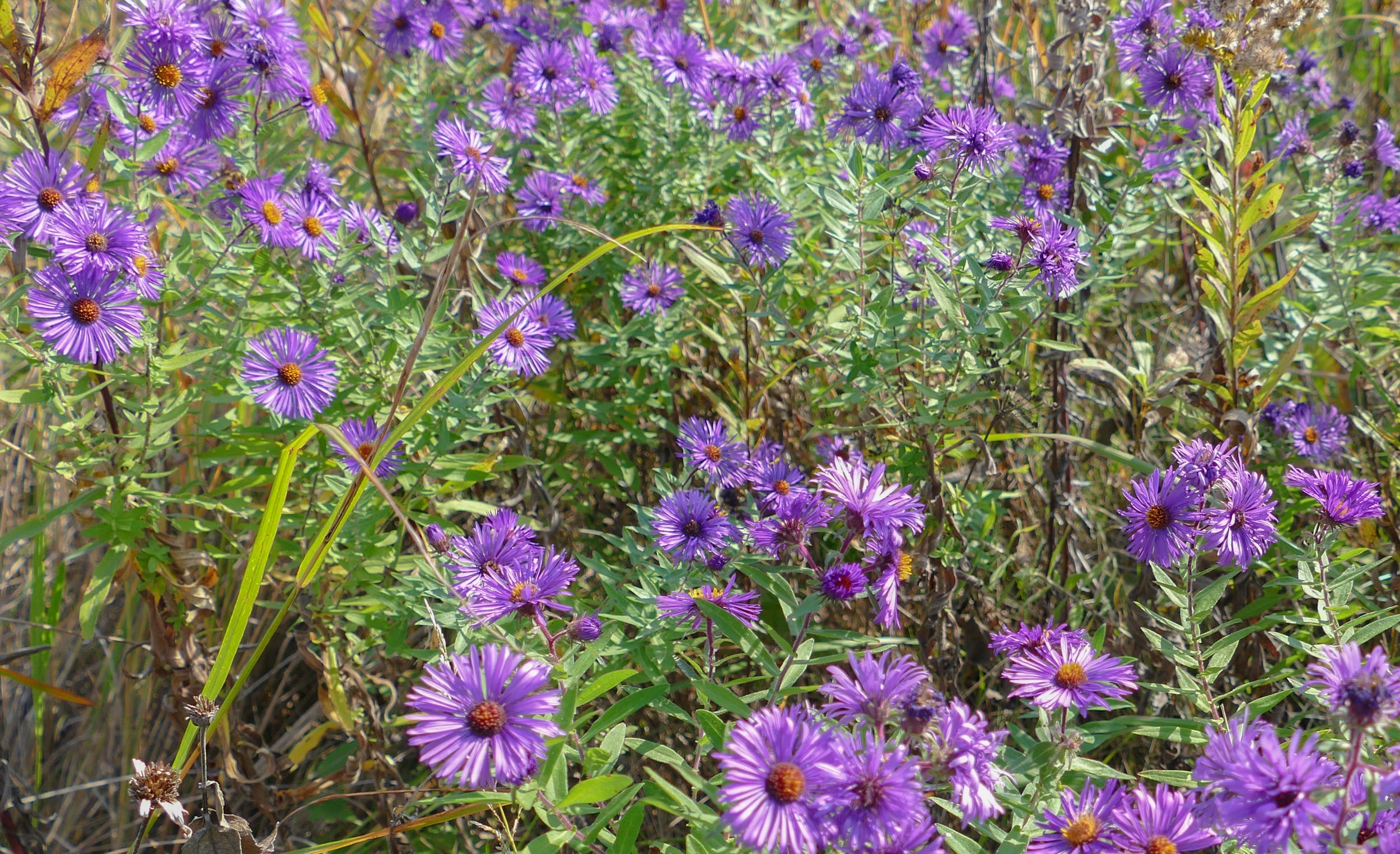Fall has arrived – the oaks are still green, but grasses and shrubs are changing to their fall colors, and brilliant colored fall flowers are blooming.
Buffalo Ridge Prairie
Wetland flowers
Hidden Oaks Point
This is the woods near the end of our afternoon walk – at this time of year the late sun shines through the leaves.
Showy Goldenrod
We’ve finished our annual August/September count of migrating monarchs that we do on our afternoon walks. By now the migration is nearly done – we’re still seeing a few monarchs, but the big groups have gone. There were fewer big days this year – only a few when we saw more than 100 monarchs – and the migration didn’t last as long as some other years. This Monarch is on Stiff Goldenrod.
And here are several on Showy Goldenrod. These two goldenrod species are favorite nectar plants during the migration.
A late Monarch caterpillar – found on September 14 – munching on a Whorled Milkweed seed pod.
And a late adult – September 30 – on New England Aster.
Common Checkered Skipper on Silky Aster. I’ve seen two of these butterflies this year. They’re not actually common in Wisconsin – they sometimes fly up from the south at the end of the summer.
Fall is when we do most of our big projects. One of our house projects was having a new wall built to replace an old, ugly concrete wall that was falling down. Roger Sendelbach, a friend and local contractor, built a gorgeous rock wall to replace it. Here’s Mike’s video of the project – Roger and Morgan did an impressive job moving those huge rocks into place. (Mike had too many projects this month so he took a break from his usual wildlife video production. Here’s a link to one of them.)
After the old wall had been taken down, we were poking around in the house siding and found this Milk Snake hiding in a crack. I caught it and moved it to a safer place.
Now that the wall is finished, we’re hoping snakes and other animals will find it. The chipmunks found it right away – they’re already finding pathways between the stones.
This is my favorite time of year to work on clearing projects. So far I’ve been working on two different parts of the Knife Edge Point. One is the west facing hillside at the end of the point, which had become very overgrown with sumac and other small shrubs. Here’s a slider with photos of one area before I started, and after I’d cleared out the brush. I cheated a little with this slider – the places in the photographs are next to each other, but not exactly the same spot.
This view is from the top of the same point, looking down our Center Valley. The steep hillside on the right is the same prairie as in the slider photos.
I’m also working in the flat prairie remnant on the wide top of the point. The middle of that remnant is in good shape, but the edges are overgrown with brush. Gray Dogwood and Trembling Aspen are two of the biggest problems. Both are clones, so big patches are connected through their root systems which makes them hard to get rid of. Last year, as an experiment, I cut Gray Dogwood at one edge of the prairie, and treated the cut surfaces with herbicide. Since I can’t tell where the clone ends, I wasn’t sure if I got it all, and whether it would work. So far it seems to be very successful – there’s been no regrowth of any of the dogwood. (Both Gray Dogwood and Aspen are native, but they often invade open prairie. I’m not trying to get rid of them – just to keep them out of the open prairie areas.)
Now I’m hoping to open the prairie up even more by cutting and treating more of the invading dogwood. The patches are thick, with mutiple stems, because they’ve been mowed for so many years.
It’s slow work, but the prairie will look much better when I’m done.
A huge tree fell across one of our paths recently. It was so big that some of the largest branches were above our heads, caught in the branches of surrounding trees. We discovered that we could use the tractor and a very long strap to pull the pieces of the tree to make them fall closer to the ground so we could cut them safely. This slider shows three stages of that project. We still have a little more cleaning up to do.
New England Asters have the most brilliant flower colors right now.
They’re favorites of late bumblebees.
Gray Goldenrod
Silky Aster
Flocks of bluebirds have been migrating through. This one was singing from the top of a nest box.
View from Hidden Oaks Point on a rainy afternoon
Red Maple leaves beginning to change color








